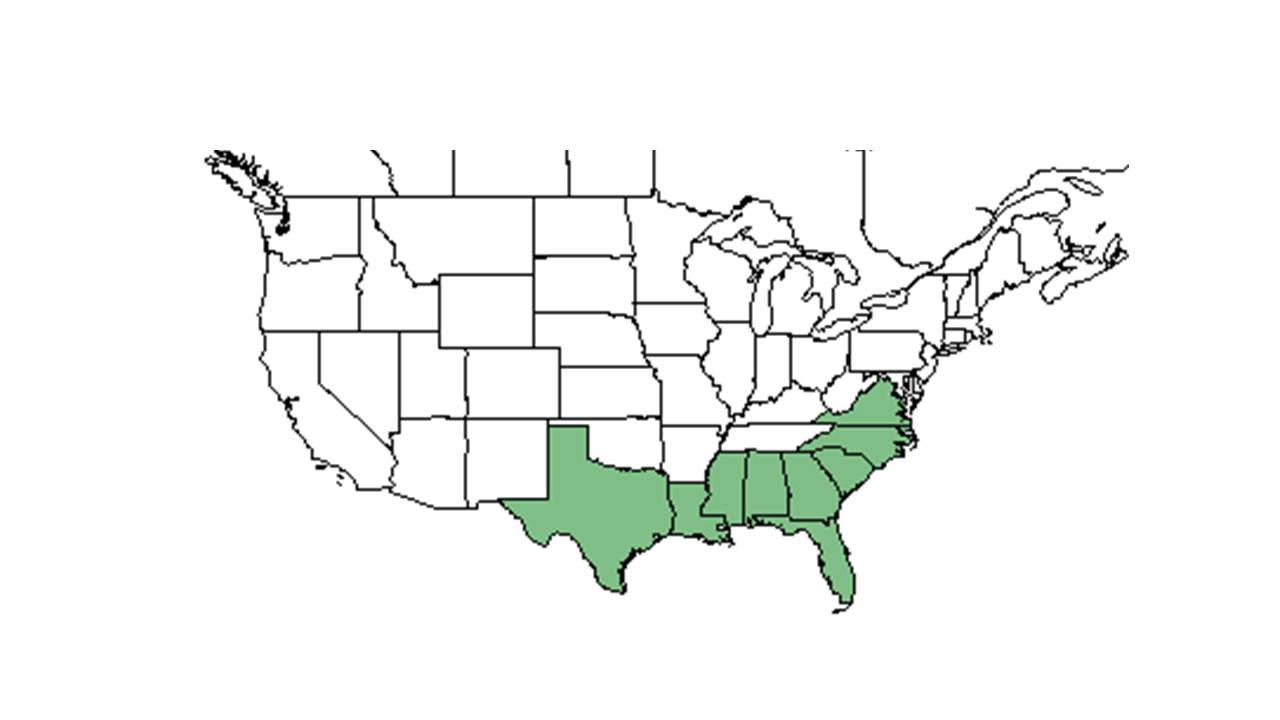Difference between revisions of "Rhynchospora grayi"
(→Photo Gallery) |
(→Seed dispersal) |
||
| Line 37: | Line 37: | ||
===Seed dispersal=== | ===Seed dispersal=== | ||
| + | According to Kay Kirkman, a plant ecologist, this species disperses by being consumed by vertebrates (being assumed). <ref name="KK"> Kay Kirkman, unpublished data, 2015. </ref> | ||
| + | |||
===Seed bank and germination=== | ===Seed bank and germination=== | ||
===Fire ecology=== <!--Fire tolerance, fire dependence, adaptive fire responses--> | ===Fire ecology=== <!--Fire tolerance, fire dependence, adaptive fire responses--> | ||
Revision as of 12:54, 12 April 2016
| Rhynchospora grayi | |
|---|---|

| |
| Scientific classification | |
| Kingdom: | Plantae |
| Division: | Magnoliophyta – Flowering plants |
| Class: | Liliopsida – Monocotyledons |
| Order: | Cyperales |
| Family: | Cyperaceae |
| Genus: | Rhynchospora |
| Species: | R. grayi |
| Binomial name | |
| Rhynchospora grayi Kunth | |

| |
| Natural range of Rhynchospora grayi from USDA NRCS Plants Database. | |
Common name: Gray's beaksedge
Contents
Taxonomic notes
Description
A description of Rhynchospora grayi is provided in The Flora of North America.
Distribution
Ecology
R. grayi was a species identified as indicating a recovered condition and perhaps high quality groundcover (Archer et al 2007).
Habitat
In the Coastal Plain in Florida and Georgia, R. grayi can be found in longleaf pine forests, longleaf pine-wiregrass ridges, pine-oak forests, burned pine flatwoods, dry pine barrens, recently burned wiregrass/pinewoods, peaty depressions in flatwoods, sandy lake shores, turkey oak-slash pine woodlands, and sandy xeric bluffs bordering creeks (Archer et al. 2007, FSU Herbarium). It can also be found in sands of powerline corridors, and sandy fallow fields. Associated species include Pinus palustris, Aristida stricta, Quercus laevis, Q. geminata, Q. margaretta, Q. incana, Licania, Stillingia sylvatica, Tragia smallii, T. urens, Rhynchosia reniformis, Croton argyranthemus and sand pine (FSU Herbarium).
Soil types include dry sand, wet peaty soil, coarse sand, Humaqueptic Psammaquents, and sandy xeric soils (FSU Herbarium).
Phenology
Flowers and fruits April through July (FSU Herbarium).
Seed dispersal
According to Kay Kirkman, a plant ecologist, this species disperses by being consumed by vertebrates (being assumed). [1]
Seed bank and germination
Fire ecology
Pollination
Use by animals
Diseases and parasites
Conservation and Management
Cultivation and restoration
Photo Gallery
References and notes
Archer, J. K., D. L. Miller, et al. 2007. Changes in understory vegetation and soil characteristics following silvicultural activities in a southeastern mixed pine forest. Journal of the Torrey Botanical Society 134: 489-504.
Florida State University Robert K. Godfrey Herbarium database. URL: http://herbarium.bio.fsu.edu. Last accessed: July 2015. Collectors: Loran C. Anderson, Robert K. Godfrey, Robert Kral, A. H. Curtiss, Sidney McDaniel, James R. Burkhalter, Steve L. Orzell, Edwin L. Bridges, William Reese, Paul Redfearn, R. F. Thorne, R. A. Davidson, A. Gholson Jr., J. M. Kane, R. A. Norris, Steve L. Orzell, Helen Roth, Chris Buddenhagen, John J. Schenk, Alice Mallory. States and Counties: Florida: Bay, Calhoun, Citrus, Clay, Duval, Escambia, Gadsden, Gilchrist, Hamilton, Holmes, Leon, Levy, Liberty, Okaloosa, Polk, Santa Rosa, Taylor, Wakulla, Washington. Georgia: Baker, Grady, Thomas. Compiled by Tall Timbers Research Station and Land Conservancy.
- ↑ Kay Kirkman, unpublished data, 2015.